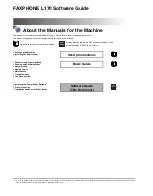
Chapter 6: IGMP Snooping
72
Section I: Using the Menus Interface
IGMP Snooping Overview
IGMP enables IPv4 routers to create lists of nodes that are members of
multicast groups. (A multicast group is a group of end nodes that want to
receive multicast packets from a multicast application.) The router creates
a multicast membership list by periodically sending out queries to the local
area networks connected to its ports.
A node that wants to become a member of a multicast group responds to a
query by sending a
report
. A report indicates an end node’s desire to
become a member of a multicast group. Nodes that join a multicast group
are referred to as
host nodes
. After becoming a member of a multicast
group, a host node must continue to periodically issue reports to remain a
member.
After the router has received a report from a host node, it notes the
multicast group that the host node wants to join and the port on the router
where the node is located. Any multicast packets belonging to that
multicast group are then forwarded by the router out the port. If a particular
port on the router has no nodes that want to be members of multicast
groups, the router does not send multicast packets out the port. This
improves network performance by restricting multicast packets only to
router ports where host nodes are located.
There are three versions of IGMP — versions 1, 2, and 3. One of the
differences between the versions is how a host node signals that it no
longer wants to be a member of a multicast group. In version 1, it stops
sending reports. If a router does not receive a report from a host node
after a predefined length of time, referred to as a
time-out value
, it
assumes that the host node no longer wants to receive multicast frames,
and removes it from the membership list of the multicast group.
In version 2, a host node exits from a multicast group by sending a
leave
request
. After receiving a leave request from a host node, the router
removes the node from appropriate membership list. The router also stops
sending multicast packets from the port to which the node is connected if it
determines there are no further host nodes on the port.
Version 3 adds the ability of host nodes to join or leave specific sources in
a multicast group.
The IGMP snooping feature supports IGMP versions 1 and 2. The AT-
FS750 switches monitor the flow of queries from a router as well as report
leave messages from host nodes to build its own multicast membership
lists. Both switches use the lists to forward multicast packets to switch
ports where there are host nodes who are members of multicast groups.
This improves switch performance and network security by restricting the
flow of multicast packets only to those switch ports connected to host
nodes.
Summary of Contents for AT-S80
Page 8: ...Contents 8 Appendix A AT S80 Software Default Settings 339 Index 343...
Page 12: ...Tables 12...
Page 24: ...24 Section I Using the Menus Interface...
Page 30: ...Chapter 2 Getting Started with the Menus Interface 30 Section I Using the Menus Interface...
Page 60: ...Chapter 4 Port Configuration 60 Section I Using the Menus Interface...
Page 78: ...Chapter 6 IGMP Snooping 78 Section I Using the Menus Interface...
Page 84: ...Chapter 7 Static Multicast Address 84 Section I Using the Menus Interface...
Page 90: ...Chapter 8 Port Mirroring 90 Section I Using the Menus Interface...
Page 96: ...Chapter 9 Dial in User Configuration 96 Section I Using the Menus Interface...
Page 118: ...Chapter 10 Virtual LANs 118 Section I Using the Menus Interface...
Page 170: ...Chapter 13 Rapid Spanning Tree Protocol RSTP 170 Section II Menus Interface...
Page 176: ...Chapter 14 Bandwidth Control 176 Section I Using the Menus Interface...
Page 206: ...Chapter 18 RADIUS Authentication Protocol 206 Section I Using the Menus Interface...
Page 212: ...212 Section II Using the Web Browser Interface...
Page 250: ...Chapter 23 Port Trunking 250 Section II Using the Web Browser Interface...
Page 254: ...Chapter 24 Port Mirroring 254 Section II Using the Web Browser Interface...
Page 260: ...Chapter 25 Static Multicast Address Table 260 Section II Using the Web Browser Interface...
Page 264: ...Chapter 26 IGMP Snooping 264 Section II Using the Web Browser Interface...
Page 272: ...Chapter 28 Bandwidth Control 272 Section II Using the Web Browser Interface...
Page 284: ...Chapter 29 Virtual LANs 284 Section II Using the Web Browser Interface...
Page 328: ...Chapter 36 Management Software Updates 328 Section II Using the Web Browser Interface...
Page 342: ...Appendix A AT S80 Software Default Settings 342...
Page 346: ...Index 346...
















































